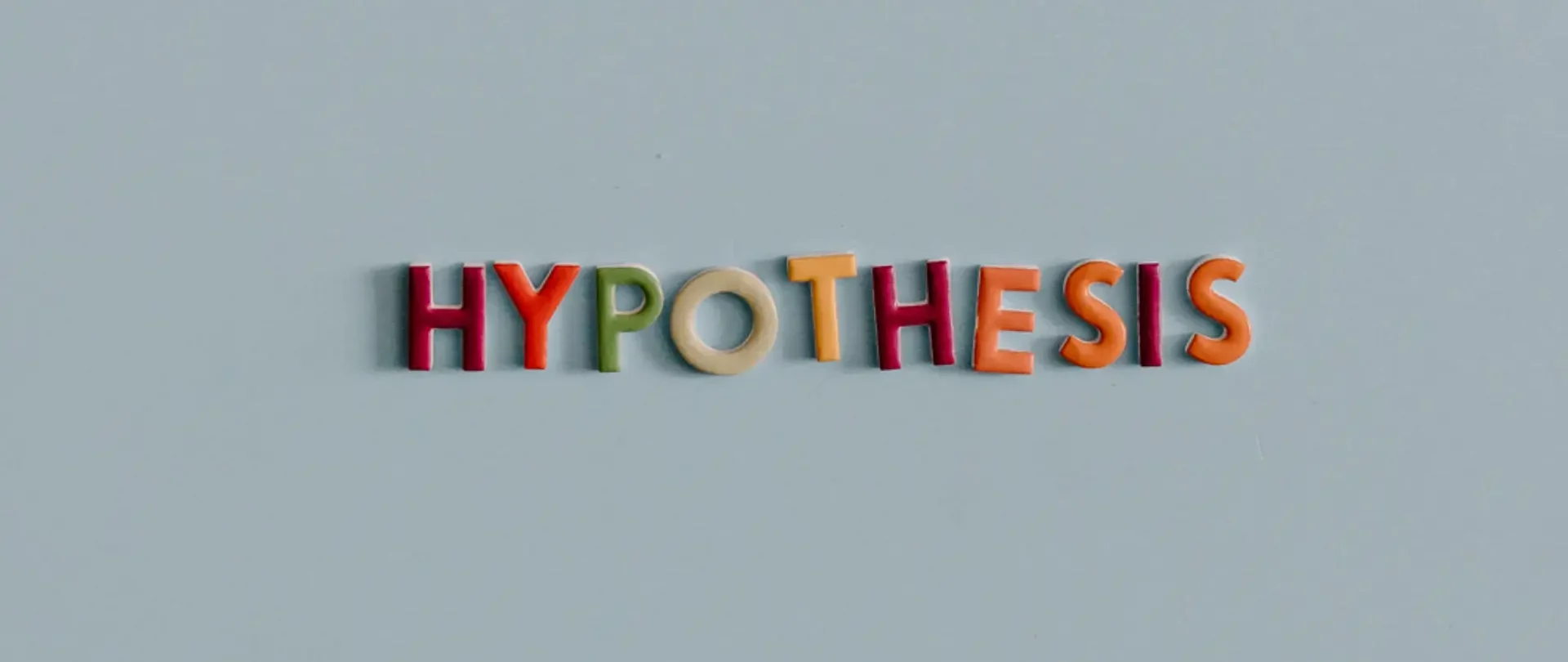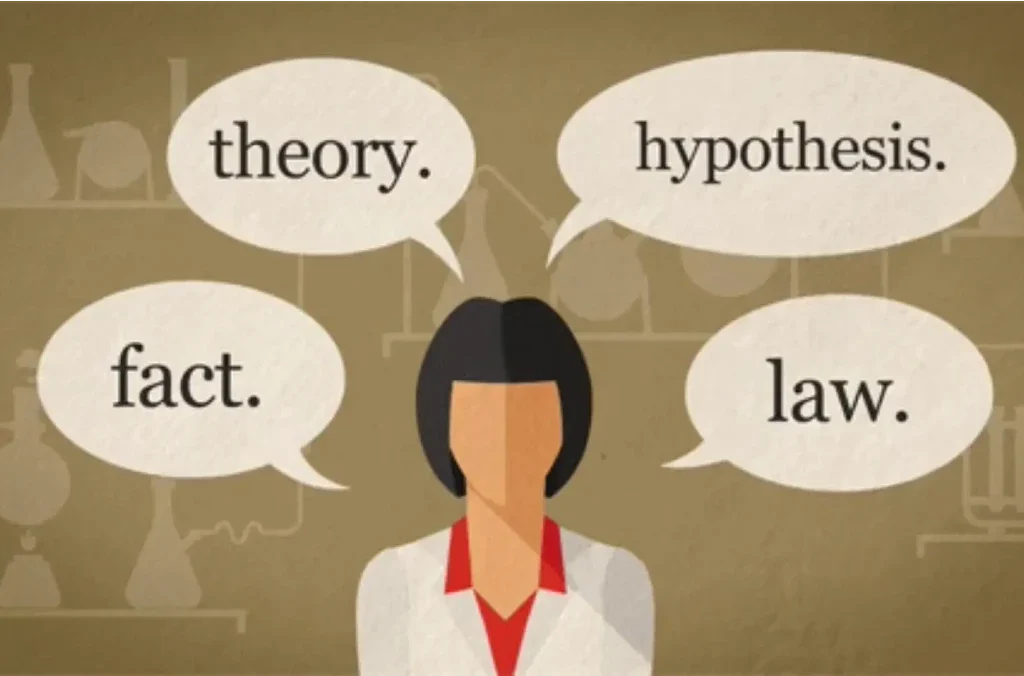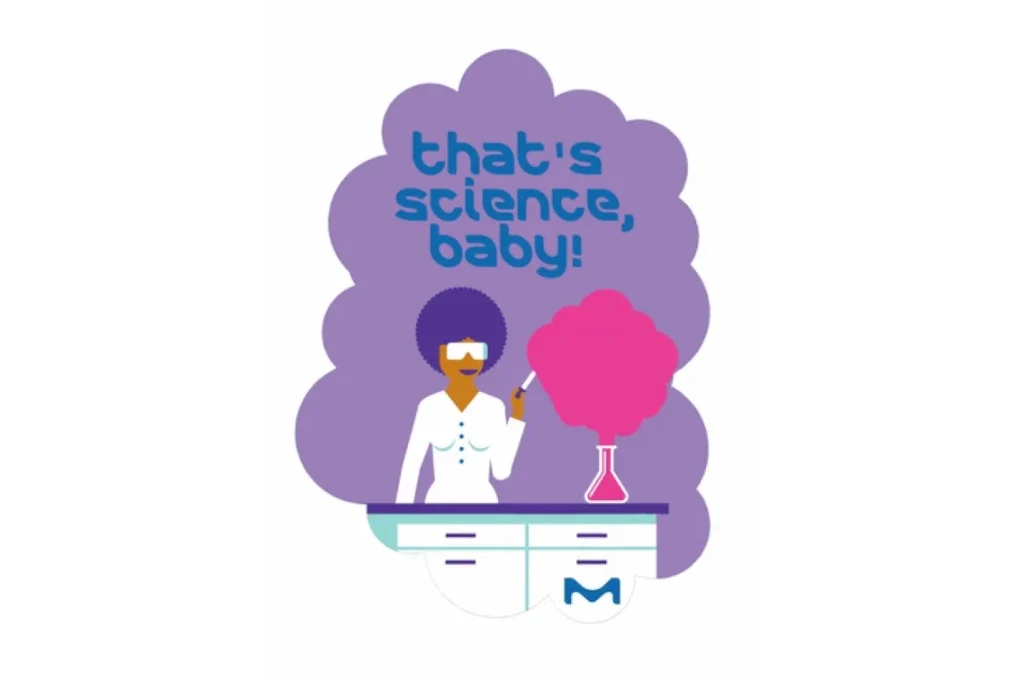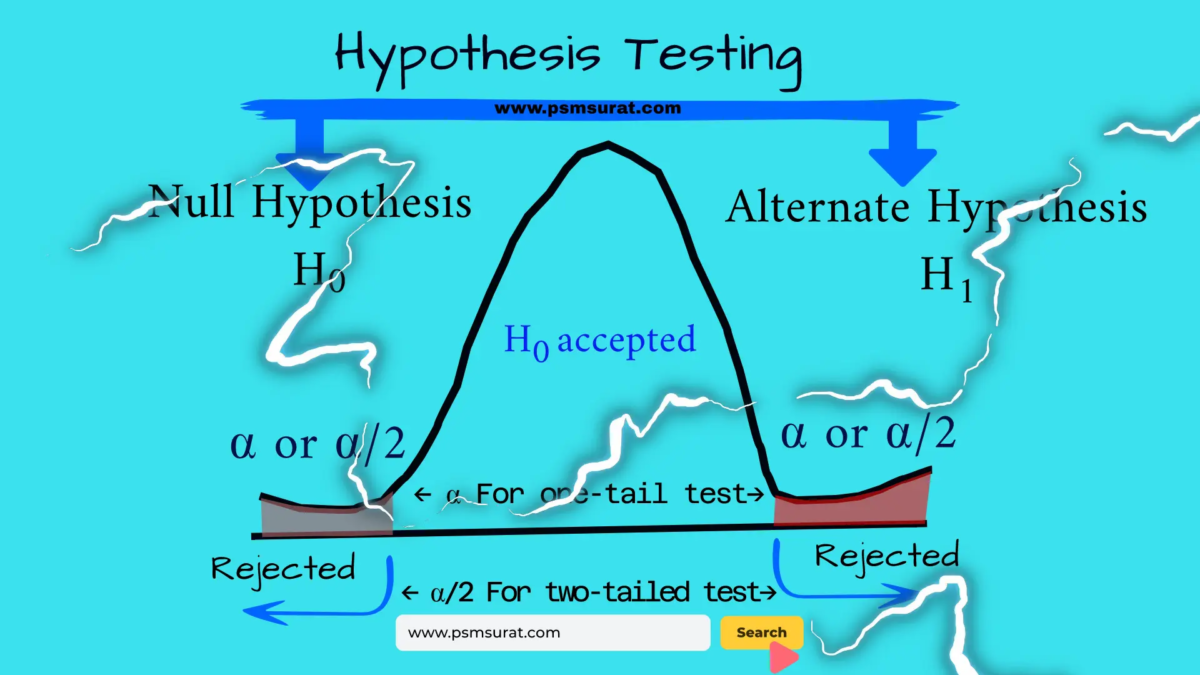We will discuss how to use hypothesis testing, a statistical method in data science, to determine the truth or falsehood of a hypothesis about a population parameter. A hypothesis is an important part of the research process. In this blog post, we will look at how to formulate a hypothesis for a research project, what is a hypothesis, and how it works.
In this process, we start by formulating a null hypothesis, which states no effect or no difference, and an alternative hypothesis, which is the statement that we are testing.
H0: No relation between physical activities and diabetes
H1: There is a relation between physical activities and diabetes
(let us take this as an example and then refine through the discussion in this article)
We have to collect a sample of data to analyze and determine the likelihood of obtaining the observed results under the null hypothesis. Then we use the results to make a decision about whether to reject or fail to reject the null hypothesis. We commonly use Hypothesis testing in A/B testing, to compare population means, and to test for correlation or association between variables.

What is Hypothesis in Hypothesis Testing
A hypothesis is a statement that proposes a possible explanation for an observed event or phenomenon. Basically, we use hypotheses in scientific research to guide the design of experiments and to make predictions about the outcome of those experiments.
The word “hypothesis” comes from the Greek word ὑπότζος, meaning “underlying assumption”.
How to Formulate a Good Hypothesis?
To formulate a hypothesis, we should:
- Clearly define the research problem or question we are trying to answer.
- Gather background information on the topic to better understand the current state of knowledge.
- Identify any knowledge gaps or discrepancies in the existing knowledge that our research could address.
- Brainstorm potential explanations or solutions to the problem or question.
- Formulate a testable hypothesis that is specific, measurable, and supported or disproved by collected data.
- Make sure our hypothesis is clear, concise, and logical
1. Clearly Define the Research Problem or Question We Are Trying to Answer

We can follow these steps to clearly define the research problem or question.
1. Identify the main topic or area of interest: Clearly define what you want to study or investigate.
2. Break down the main topic into specific research questions or objectives: This will help us focus our research and make it easier to identify the specific information you need to gather.
3. Ensure that the research question is clear and specific by avoiding using vague or general terms that can be interpreted in multiple ways.
4. Define any key terms or concepts that are central to the research question: This will help ensure that everyone involved in the research is on the same page.
5. Check for relevance and significance: Make sure that the research question is important and relevant to our field of study or to society.
6. Consider different perspectives: It is important to consider different perspectives and angles to the research question, this will help you to identify any potential biases or limitations in the research
7. Be open for change: Be open to changing research questions, as you may find new information or insights that change the direction of research.
In our example above we want to investigate the relationship between physical activities and their effect on diabetes. Although it looks very straight, we have to clearly define the physical activities (types, duration, frequency, etc.) and also what kind of effect we are talking about related to diabetes(reduced mean blood sugar, Hba1C, quality of life, etc.).
By following these steps, we can ensure that our research question is clearly defined and focused, which will make it easier to conduct the research and draw meaningful conclusions.
2. Gather background information on the topic to better understand the current state of knowledge.
To gather background information on a topic, you can use the following methods:
Literature review: Review existing research on the topic by searching academic databases, such as JSTOR, PubMed, or Google Scholar. Look for peer-reviewed journal articles, books, and other scholarly sources that are relevant to our research question.
Surveys and interviews: Conduct surveys or interviews with experts in the field or with individuals who have experience with the problem or question you are trying to answer.
Historical research: Look for historical documents or archives that provide information on the topic.
Internet research: Look for information on the topic on the internet, and be aware that not all the information you find on the internet is reliable or accurate.
Government reports and statistics: Look for government reports or statistics that provide information on the topic.
Observation: Observe people, events, or phenomena related to the topic.
Case studies: Look for case studies or examples of similar problems or questions that have been studied in the past.
Consulting with a guide(experts): Consult with your guide to get their insights and perspectives on the topic
for our example of diabetes and physical activity, we have to conduct extensive review of literature to define the physical activities which is measureble. We also have to define which are measurable effect of the physicle activites on diabetes so that we can study the relationship between two using statistics.
It’s also important to keep track of our sources and take note of any biases or limitations in the information you gather.
3. Identify any gaps or inconsistencies in the existing knowledge that our research could address.
To identify gaps or inconsistencies in existing knowledge that research could address, we can follow these steps:
Review existing literature on the topic: Carefully read and evaluate the existing research on the topic. Which will, in turn, identify any inconsistencies or gaps in the existing knowledge.
Look for conflicting findings: Pay attention to studies that have produced conflicting findings or different conclusions.
Identify missing information: Look for information that is missing or not well-studied in existing research.
Consider different perspectives: we have to explore the topic from different perspectives, such as different disciplines or cultures. This will help us to identify any areas that have not been fully explored.
Check for biases or limitations: Look for potential biases or limitations in the existing research, such as small sample sizes or lack of diversity in the participants.
Identify potential areas for future research: Based on the gaps or inconsistencies you have identified, identify potential areas for future research that could address these issues.
Consider the feasibility of our research: Consider the feasibility of our research, such as the availability of data, funding, and resources.
Newer methods to measure/report/classify physical activities. Is there any index or scale which has been used elswhere? How we can define diabetic care using some parmeters.Is there any new aproach to measure diabetes control?
4. Brainstorm potential explanations or solutions to the problem or question: Hypothesis testing

To brainstorm potential explanations or solutions to a problem or question, you can follow these steps:
Define the problem or question: Clearly define the problem or question you are trying to answer.
Gather background information: Gather information on the topic by reviewing existing literature and conducting research.
Identify key variables: Identify the key variables or factors that may be related to the problem or question.
Generate ideas: Encourage creative thinking by generating a list of as many ideas as possible without evaluating them yet. You can use techniques like mind mapping, free writing, or brainstorming to generate ideas.
Evaluate the ideas: Evaluate the ideas generated in step 4. Consider the feasibility, practicality, and potential impact of each idea.
Prioritize the ideas: Prioritize the ideas based on their potential impact, feasibility, and practicality.
Refine the ideas: Refine the most promising ideas by adding more details and thinking about how to implement them.
Consult with experts: Consult with experts in the field.
By following these steps, we can generate a wide range of potential explanations or solutions to the problem or question. And finally, we can evaluate them based on their potential impact, feasibility, and practicality.
5. Formulate a specific, testable hypothesis that can be supported or disproved by data: Hypothesis testing
To formulate a specific, testable hypothesis we can follow these steps:
Start with an “if-then” statement: A good hypothesis should be in the form of “If [Independent Variable], then [Dependent Variable].”
Be specific and clear: Make sure our hypothesis is specific and clear. So that it accurately reflects the problem or question we are trying to answer.
Use existing knowledge and evidence: Base your hypothesis on existing knowledge and evidence, rather than on assumptions.
Make sure it is testable: We should be able to test our hypothesis through experiments or other studies.
Consider alternative hypothesis: Consider an alternative hypothesis that can explain the same observations but in a different way
Define variables: Clearly define the hypothesis’s independent and dependent variables.
Make sure it is falsifiable: Make sure the hypothesis is falsifiable, meaning that it should be possible to design an experiment or test that could disprove the hypothesis if it were not true.
Keep it simple: Keep the hypothesis as simple as possible, with one or two sentences.
We have to formulate a specific, testable hypothesis that is supported or disproved by data by following these steps. This will help us to conduct our research with a clear focus and will make it easier to draw meaningful conclusions from our data.
In our example: To investigate the association between a healthy lifestyle index (HLI) (i.e., a composite score comprising multiple lifestyle factors) and diabetic care (A1C levels, Blood pressure levels,LDL cholesterol levels,Eye exams,Tests for kidney function,Foot exam) among patients coming to tertiary care hospital.
6. Make sure the hypothesis is clear, concise, and logical: Hypothesis testing

To make sure our hypothesis is clear, concise, and logical, we can follow these tips:
Use simple, clear language: Avoid technical jargon or overly complex language, as this can make our hypothesis difficult to understand.
Be specific: Clearly state what we can expect to happen and what variables we will be studying.
Avoid making assumptions: hypothesis should be based on existing knowledge and evidence, not on assumptions.
Testability and logic as mentioned above.
Keep it Short: Keep the hypothesis as short as possible, with just one or two sentences.
Check for Errors: Make sure the hypothesis is grammatically correct and free of typos, errors, or ambiguities.
If we follow these guidelines then we can ensure that our hypothesis is clear, concise, and logical. It will make it easier to understand and test.
FAQ’s
A hypothesis is a statement or explanation that serves as a starting point for further investigation or experimentation.
The purpose of a hypothesis is to provide a tentative explanation for an observation or problem that can then be tested through further investigation or experimentation.
A good hypothesis should be testable, and falsifiable, and make a clear prediction.
A hypothesis is tested through experimentation or observation, where data is collected and analyzed to determine whether the hypothesis is supported or rejected.
A hypothesis can never be proven, but it can be supported by evidence. A hypothesis that has not been disconfirmed through experimentation is considered to be a scientific theory.
A hypothesis is a tentative explanation for an observation or problem, while a theory is a well-substantiated explanation for a wide range of phenomena. A hypothesis becomes a theory when it has been repeatedly tested and supported by evidence.
A scientific method is a systematic approach to solving problems or answering questions, which typically involves formulating a hypothesis, designing an experiment to test it, collecting and analyzing data, and drawing conclusions based on the results.
A null hypothesis is a statement that there is no difference or relationship between the variables being tested. It is used as a starting point in hypothesis testing, and the goal is to determine whether there is evidence to reject it.
A hypothesis is often developed based on observations, existing knowledge, and current understanding of a subject. It is then tested through experiments and data analysis.
A good hypothesis should be testable, falsifiable, and have predictions that can be verified through experiments or data analysis.
A hypothesis is tested through experiments, data analysis, and other forms of investigation to determine its validity.
If a hypothesis is not supported by the evidence, it is usually rejected or modified. The scientific process then continues with the development of new hypotheses or theories.

Add a Comment
You must be logged in to post a comment